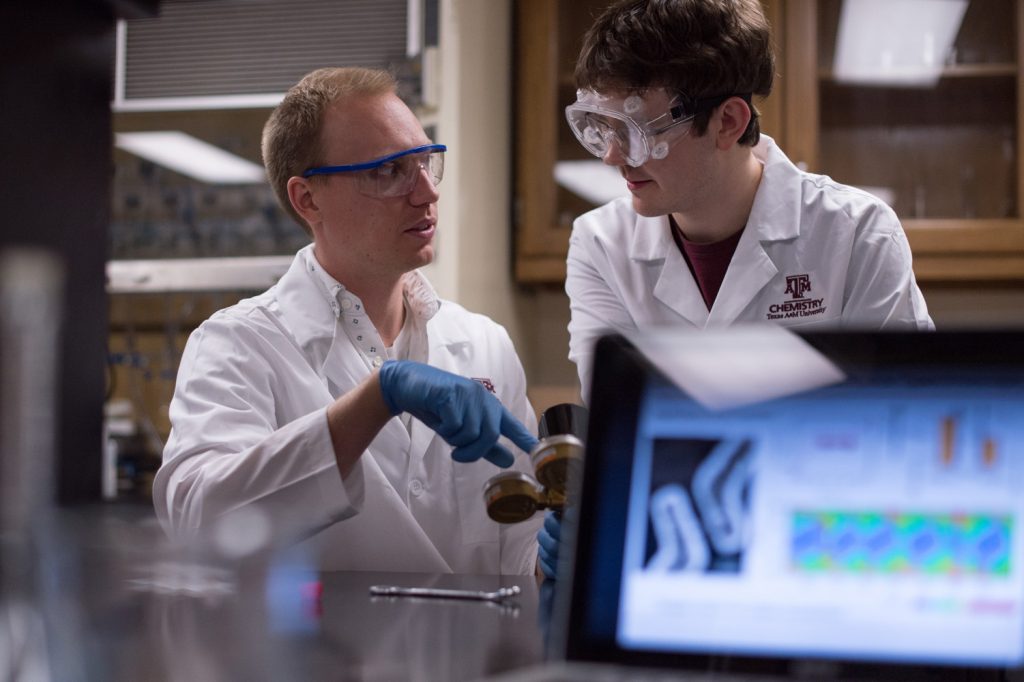A&M chemists use lasers to create magnetic field in gold nanoparticles

In searching for new ways to better control and understand magnetism, scientists at Texas A&M University have struck literal gold.
A recent study, led by chemists Matthew Sheldon and Dong Hee Son, has found that magnetic fields can be generated by shining a polarized beam of light on nanometer-sized particles of gold, a huge breakthrough in a decades-long global quest within the science community to identify techniques for ultrafast optical control of magnetism.
Their paper, which includes Texas A&M chemistry graduate student Oscar Hsu-Cheng Cheng as an author, is published in the March 16 edition of the journal Nature Photonics.
“We were able to lay a clear experimental ground that will enable the use of light to produce a controllable magnetic field without using ‘magnetic’ materials,” Son said. “I am very excited about this result.”
Gold in its bulk form traditionally has been classified as a typical diamagnetic material with weak magnetism, meaning it is unable to act as a magnet by itself. When the size of a gold sample is reduced to nanoscale, however, like many materials, it displays entirely different physical properties.
The team was able to show that, by manipulating their size and shape, gold nanoparticles will behave individually like small, albeit incredibly strong magnets when introduced to a controlled light source. Because the magnetic field only becomes charged under a light source, the magnetism can be turned off and on at ultrafast speeds — faster than one-trillionth of a second.
“Before starting these experiments, we published a manuscript of a theoretical study in which we outlined many of these predictions,” said Sheldon, a 2017 Gordon and Betty Moore Foundation Moore Inventor Fellow. “That said, we were unsure if it would actually be possible to measure the effect, because there was significant uncertainty about the magnitude of the magnetism and other assumptions in our theoretical analysis. It was very thrilling when we started collecting the data, and the signal was very clear, even stronger than we predicted.”
Sheldon notes that the magnetic field generated in their study is even greater than that of a refrigerator magnet and that its strength is directly proportional to the intensity of the incident light.
“Therefore, even stronger magnetic fields may be possible by further optimizing how the nanoparticles interact with light or by increasing the intensity of the incident light,” he said. “This could enable new technologies that need even stronger magnets.”

